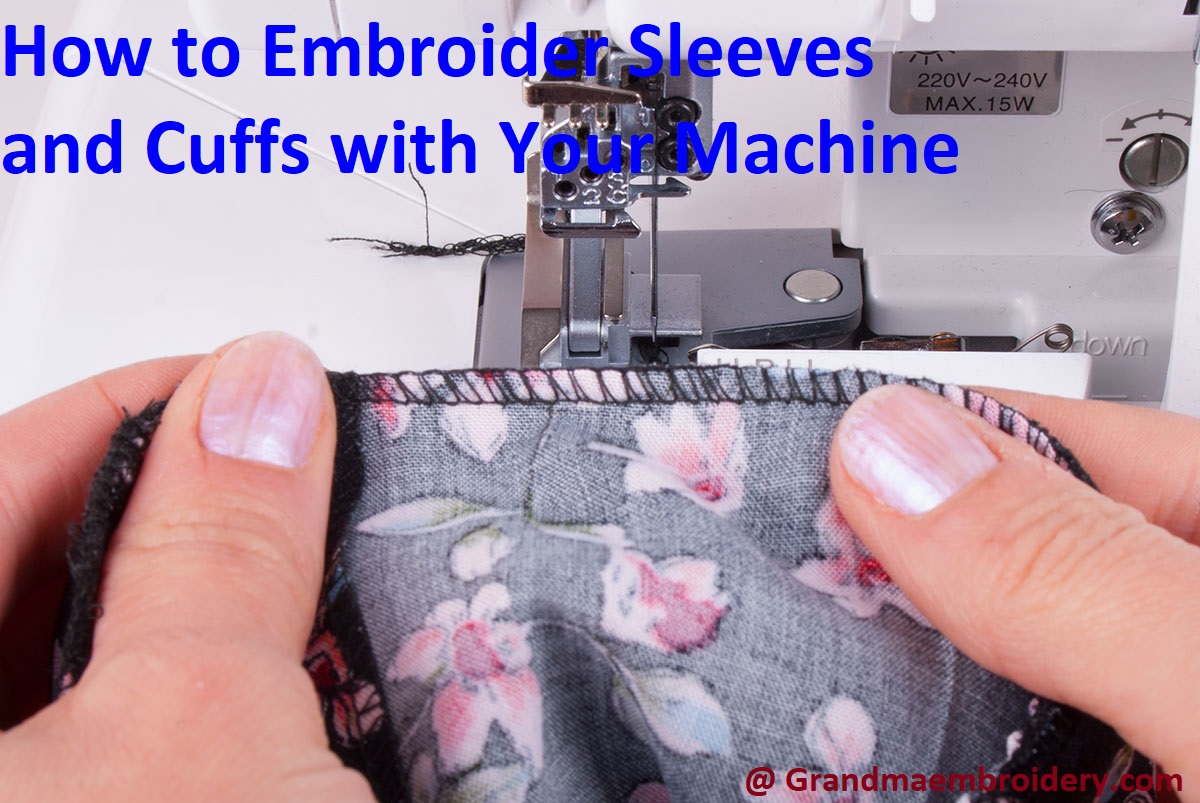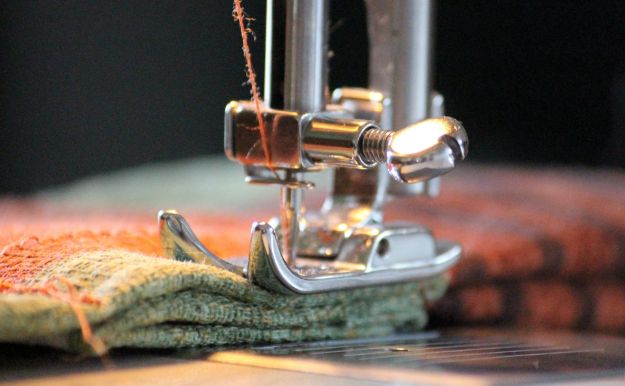Introduction
- Embroidery is the art of decorating fabrics using needle and thread. It is a craft that has been around for thousands of years and is still popular today. Embroidery can be done by hand or by using a machine, and it can be used to create intricate designs on a variety of fabrics.

- Machine embroidery on sleeves and cuffs is a technique that involves using an embroidery machine to stitch designs onto the sleeves and cuffs of clothing items. This technique is commonly used in the fashion industry to add decorative elements to shirts, blouses, and other garments. The embroidery machine is programmed to stitch the design onto the fabric, creating a precise and consistent pattern. This technique is faster and more efficient than hand embroidery, making it a popular choice for manufacturers and designers.
Materials Needed
- To do machine embroidery on sleeves and cuffs, you will need a machine embroidery hoop. This is a frame that holds the fabric in place while you stitch the design onto it. The hoop keeps the fabric taut and prevents it from puckering or shifting during the embroidery process.
- You will also need a stabilizer, which is a material that is placed underneath the fabric to provide support and prevent stretching or distortion during the embroidery process. There are different types of stabilizers available, such as tear-away, cut-away, and water-soluble stabilizers.
- Embroidery thread is also needed for the embroidery machine. There are many different colors and types of thread available, so choose the ones that best match your design and fabric.
- Scissors are essential for cutting the thread and stabilizer.
- Finally, you will need the sleeves or cuffs that you want to embroider. Make sure they are clean and pressed before starting the embroidery process.
III. Preparing the Machine and Design
- The first step in preparing the machine and design is to select the embroidery design and decide on the appropriate size. You can either create your own design or use pre-made designs available online or in software programs. When selecting the size, make sure it fits the sleeve or cuff where you want to embroider it.
- Next, prepare the embroidery machine and hoop according to the instructions. This typically involves attaching the hoop to the machine and selecting the appropriate hoop size.
- Once the machine and hoop are prepared, you can attach the stabilizer to the back of the fabric. Cut a piece of stabilizer slightly larger than the hoop size and place it on the wrong side of the fabric. Smooth out any wrinkles or bubbles in the stabilizer to ensure it is properly adhered to the fabric. You can then place the fabric with the attached stabilizer into the embroidery hoop, making sure it is taut and centered. Tighten the hoop to hold the fabric in place.
Embroidering Sleeves and Cuffs
- To embroider sleeves and cuffs, place the embroidery hoop onto the sleeve or cuff. Make sure the area you want to embroider is centered within the hoop and that the fabric is stretched taut within the hoop.
- Once the hoop is in place, turn on the embroidery machine and select the design you want to stitch. Start the machine, and it will begin to stitch the design onto the fabric.

- While the machine is embroidering, monitor the progress to ensure everything is stitching correctly. If you notice any issues, such as the fabric bunching up or the thread breaking, stop the machine and make the necessary adjustments. You may need to reposition the hoop, adjust the tension or rethread the machine. It is important to keep an eye on the embroidery process to avoid any mistakes or problems. Once the embroidery is complete, carefully remove the hoop from the fabric and remove any excess stabilizer from the back of the fabric.
Finishing and Cleaning Up
- Once the embroidery is complete, remove the hoop from the fabric and carefully peel away the stabilizer from the back of the fabric. Be sure to remove all the stabilizer without damaging the embroidery.
- Trim any excess threads using scissors. This includes any thread tails on the front or back of the embroidery.
- After trimming, it is recommended to iron the embroidered area using a pressing cloth. This helps to smooth out any puckering that may have occurred during the embroidery process. It is important to use low heat and avoid ironing directly on the embroidery to avoid damaging the threads.
Once these steps are completed, your machine embroidered sleeves or cuffs are ready to wear or use in your project!
Tips and Tricks
- Practice on scrap fabric before beginning the embroidery on the actual sleeves or cuffs. This allows you to test out the design and make any necessary adjustments before embroidering on the final piece.
- For delicate fabrics such as silk or chiffon, consider using a water-soluble stabilizer. This type of stabilizer dissolves in water and leaves no residue, making it ideal for delicate fabrics.

- To ensure the fabric stays in place and does not shift during the embroidery process, consider using a basting stitch to secure it to the stabilizer. This can be removed once the embroidery is complete.
Additional tips include using high-quality embroidery thread, changing needles regularly, and cleaning the machine regularly to ensure it operates smoothly. With these tips and tricks, you can create beautiful and professional-looking machine embroidered sleeves and cuffs.
VII. Conclusion
- In conclusion, machine embroidery on sleeves and cuffs can be a fun and creative way to add a personal touch to your clothing or projects. To recap, you will need a machine embroidery hoop, stabilizer, embroidery thread, scissors, and sleeves or cuffs to embroider. Prepare the machine and design, attach the stabilizer to the fabric, place the hoop on the sleeve or cuff, start the embroidery machine, monitor the progress, and finish by removing the hoop and stabilizer, trimming excess threads, and ironing.
- We encourage you to try machine embroidery on sleeves and cuffs and explore your creativity. With a bit of practice and the right tools and techniques, you can create beautiful and unique designs that are sure to impress. Whether you’re embroidering a shirt sleeve, a dress cuff, or any other fabric, the possibilities are endless!
See Also-
- Best Embroidery Machine For Custom Designs 2023
- Best Computerized Embroidery Machine 2023
- Best Embroidery Machine For Beginners 2023
- Best Embroidery Machine For Large Designs 2023
- Best Embroidery Machine For Small Business 2023



